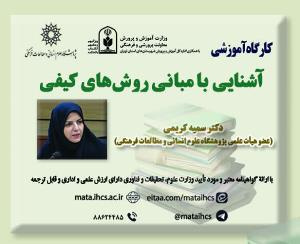نظم منطقه ای خاورمیانه در پرتو روابط ایران و عربستان؛ توصیف گذشته، تبیین حال و پیش بینی آینده (مقاله علمی وزارت علوم)
درجه علمی: نشریه علمی (وزارت علوم)
آرشیو
چکیده
چرایی و چگونگی حاکم شدن گونه خاصی از نظم در ساختار امنیتی مناطق و شناسایی متغیرهای موثر در این فرآیند از جمله پرسش های مهم مطالعات امنیتی است. در بسیاری از متون کلاسیک روابط بین الملل، نظم و امنیت منطقه ای ذیل روابط قدرت های بزرگ تعریف شده است. پژوهش حاضر اما سطح تحلیل منطقه ای را در بررسی پرسمان امنیت منطقه ای حائز اهمیت دانسته و بر این دیدگاه استوار است که ساختار امنیتی مناطق در کنار تاثیرپذیری از نقش آفرینی قدرت های بزرگ مبتنی بر کنش بازیگرانی در سطح منطقه است که اهداف امنیتی خود را بر اساس روندهایی از ثبات و همکاری یا ناامنی و تعارض تعریف می کنند. در این راستا هدف اصلی پژوهش توصیف گذشته، تبیین حال و ترسیم آینده ساختار امنیتی خاورمیانه با تمرکز بر الگوهای تعارض و همکاری ایران و عربستان به عنوان دو بازیگر اصلی محیط امنیتی خاورمیانه است. پرسش اصلی این است که رقابت های منطقه ای ایران و عربستان چه تاثیری بر ساختار امنیتی خاورمیانه داشته و آینده این ساختار متاثر از رقابت دو کشور چگونه است؟ فرضیه ای که در پاسخ به این پرسش مطرح می شود پویش های منطقه ای و مناسبات امنیتی متقابل ایران و عربستان را عاملی مهم در شکل گیری و تحول ساختار امنیت منطقه ای دانسته و معتقد است مناسبات امنیتی دو کشور متغیری تعیین کننده در آینده نظم منطقه ای خاورمیانه است. روش انجام پژوهش تحلیل کیفی با بهرمندی از روش ردیابی فرآیند است. متغیر وابسته پژوهش ساختار امنیتی خاورمیانه و متغیر مستقل الگوهای تعارض و همکاری ایران و عربستان در دوره های تاریخی مشخص است.Middle East Regional Order focusing on Iran-Saudi relations; Describing the past, explaining the present and predicting the future
The upcoming research describes the past, explains the present and outlines the future of the security structure of the Middle East with an innovative approach and focusing on the patterns of conflict and cooperation between Iran and Saudi Arabia. Obviously, the main question of the research is, what effect has the regional rivalry between Iran and Saudi Arabia had on the security structure of the Middle East and how is the future of this structure affected by the rivalry between the two countries? The hypothesis that is proposed in the framework of the "Copenhagen Security School" and thinkers such as "Barry Buzan" and "Oli Weaver" in response to this question considers regional conflict and cooperation patterns as an important factor in the formation and evolution of the regional security structure. It seeks to prove the proposition that the conflict between Iran and Saudi Arabia has had a significant impact on regional security and is considered one of the main drivers of the new order in the Middle East. The research method is qualitative analysis using the process tracing method. The dependent variable of the research is the security structure of the Middle East and the independent variable is the patterns of conflict and cooperation between Iran and Saudi Arabia in certain historical periods. Therefore, the research method is focused on the causal sequence of events that have shaped the patterns of relations between the two countries and are naturally effective on the security structure of the Middle East.







